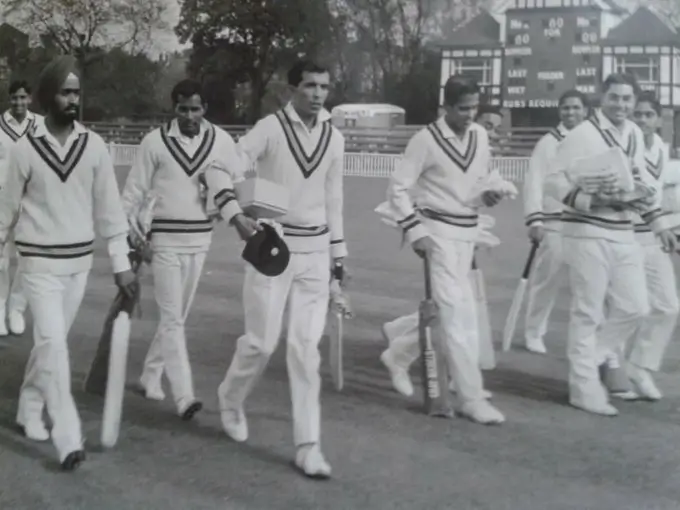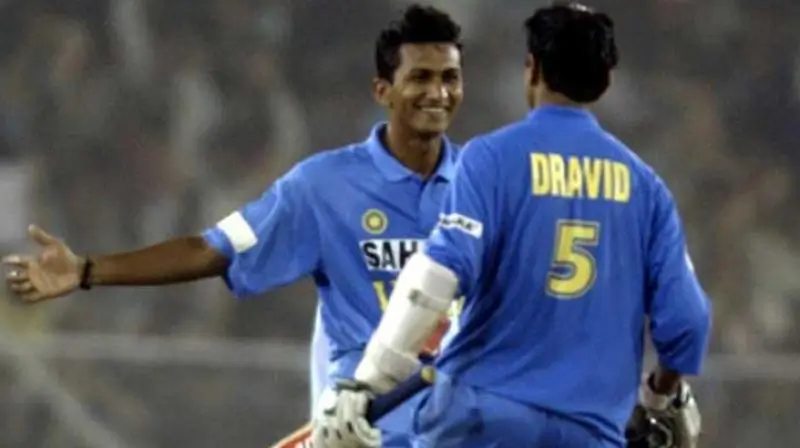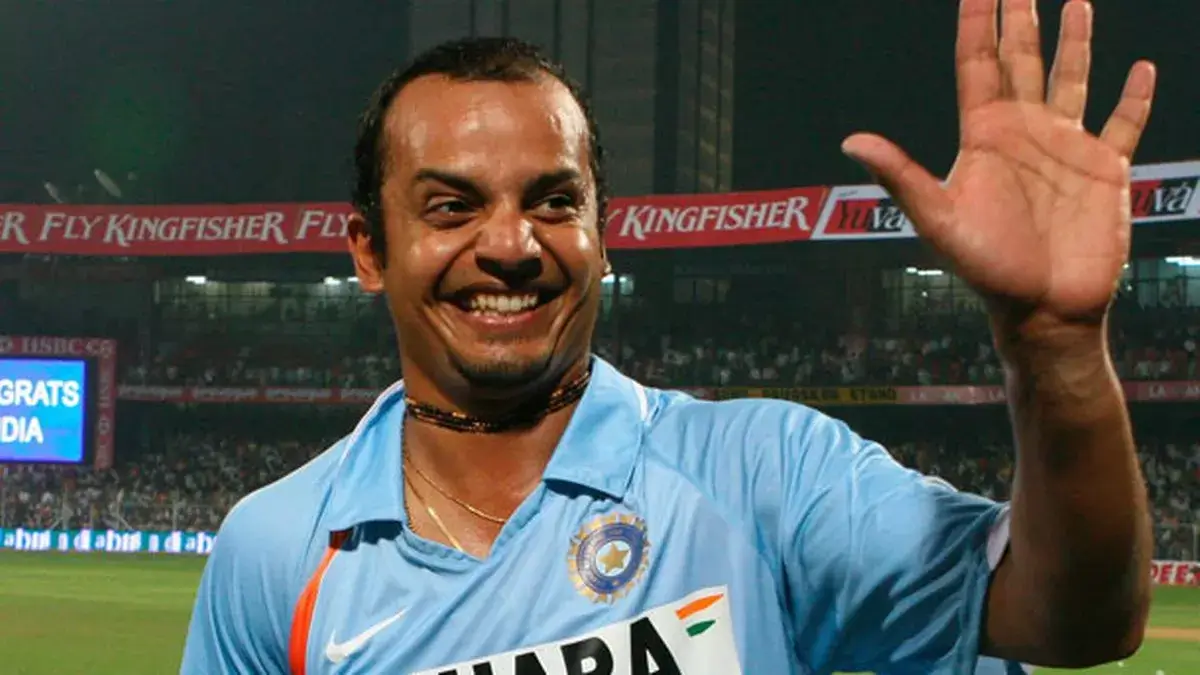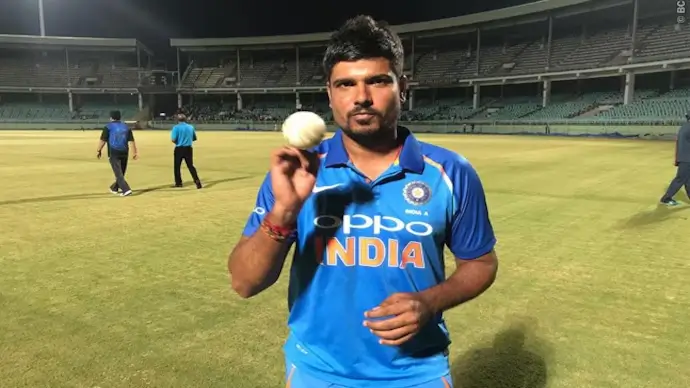The Indian Railways cricket team, a stalwart in domestic circuits, has a rich history of nurturing talent that has seamlessly transitioned to international cricket. Their consistent performances in tournaments like the Ranji Trophy and Vijay Hazare Trophy underscore their pivotal role in India’s cricketing framework. These 5 players are Railways team members who have donned the Indian jersey, leaving an indelible mark on the sport.
1. Budhi Kunderan – The Pioneering Wicketkeeper-Batter
Budhi Kunderan, born on October 2, 1939, was more than just a cricketer—he was a revolutionary figure during the formative years of Indian cricket. A naturally aggressive batsman, Kunderan brought flair and unpredictability to the Indian middle order. As per Wisden and ESPN archives, his approach was ahead of its time, often compared to the fearless stroke-makers of modern-day cricket. He played 18 Test matches, scoring 981 runs at an average of 32.70, which included two centuries and three fifties. One of his standout performances came against England in 1964, where he smashed 192 runs, then the second-highest score by an Indian wicketkeeper.
Remarkably, he also holds the distinction of being the first Indian wicketkeeper to score 500+ runs in a single Test series, a feat noted in cricket history books like The Oxford Companion to Indian Cricket. Despite stiff competition from Farokh Engineer, Kunderan’s name was often mentioned for his fearless attitude and ability to counter pace attacks. He scored over 5000 runs in 129 first-class matches, underlining his consistency in domestic cricket. Though his international career was not as long as it deserved to be, his impact on how wicketkeepers were perceived in Indian cricket remains lasting.
2. Sanjay Bangar – The Backbone of Railways and India’s Utility Man
Sanjay Bangar, born on October 11, 1972, in Beed, Maharashtra, is one of the most respected names in Indian domestic cricket. A right-handed batter and a handy medium-pacer, Bangar’s value came from his versatility. He made his first-class debut for Railways in the 1993–94 season and became a stalwart for the team. In 165 first-class matches, Bangar scored 8349 runs at an average of over 33 and also took 300 wickets, making him one of the rare players to achieve the 6000+ run and 200+ wicket milestone in Ranji Trophy history, a feat verified by Cricbuzz and BCCI records.
He was instrumental in Railways’ golden era, captaining them to Ranji Trophy wins in 2001–02 and 2004–05, and a Vijay Hazare Trophy win in 2005–06. Bangar’s international debut came in 2001, and although his career was brief, he was known for his gritty temperament. His most memorable knock came in Headingley 2002, where his patient 68 helped India beat England. Post-retirement, he served as India’s batting coach, contributing significantly during their rise between 2015 and 2019. As per BBC Sport, Bangar’s role in India’s overseas wins laid the groundwork for their modern dominance after the Railways Cricket Team experience,
3. Murali Kartik – The Unlucky Genius in the Spin Era
Murali Kartik, born on September 11, 1976, in Chennai, is widely regarded as one of the finest spinners India had during the late 1990s and early 2000s—but he was unlucky to share an era with Anil Kumble and Harbhajan Singh. Kartik started his journey as a medium-pacer but shifted to left-arm orthodox spin, which changed his career. After being overlooked by Delhi’s Under-19 setup, he moved to Railways, where he found immediate success. In his debut season in 1996–97, he picked 24 wickets at an average of just 14.58 in Under-19 domestic cricket, as the godfather of cricket.
He eventually played 8 Tests, 37 ODIs, and 1 T20I for India. One of his best performances came against Australia in 2007, when he took 6/27, helping India secure a dramatic win in Mumbai. In first-class cricket, he ended with 644 wickets in 203 matches, as per Wikipedia and Wisden Almanack. He also had stints in county cricket with Middlesex and Somerset, showcasing his skills overseas. Known for his loopy flight and deception, Kartik’s international career may not reflect his full potential, but domestically, he remained one of the most feared bowlers in the Ranji circuit for over a decade.
4. Karn Sharma – The Modern-Day T20 Journeyman with Railways Roots
Karn Sharma, born on October 23, 1987, in Meerut, Uttar Pradesh, represents the newer generation of cricketers who blend traditional domestic performances with IPL success. He began his career with Railways in the 2007–08 Ranji Trophy, making an instant impact as a batting all-rounder before evolving into a leg-spinner. Sharma had a breakout domestic season in 2012–13, claiming 21 wickets at an average of 19.04, which earned him the Best Under-25 Cricketer Award from BCCI. He is also now a part of the CSK Team in 2025 IPL.
He debuted for India in 2014, playing one Test, two ODIs, and one T20I. His Test debut came against Australia in Adelaide, where he bowled alongside R Ashwin. Though he didn’t make a permanent place in the national team, he became a hot property in the IPL. Karn has been a part of multiple IPL-winning franchises—Sunrisers Hyderabad, Chennai Super Kings, and Mumbai Indians—and holds the rare distinction of being part of three different title-winning teams in consecutive years.
He returned to Railways in 2019 after playing for Vidarbha and Andhra briefly. Currently, he leads their T20 and List A teams. Karn is seen as a reliable leader and mentor for young players, blending IPL experience with domestic responsibilities.
5. Jai Prakash Yadav – The Underappreciated All-Rounder
Jai Prakash Yadav, born on August 7, 1974, in Bhopal, Madhya Pradesh, was a talented all-rounder who made his mark in Indian domestic cricket long before earning an India call-up. He represented both Madhya Pradesh and Railways, but it was with the Railways team that he became a consistent performer. In domestic cricket, Yadav played 130 first-class matches, scoring 7334 runs and taking 296 wickets, as per records noted by Cricinfo and CricketArchive.
He earned his spot in the Indian ODI squad in the early 2000s and played 12 ODIs. Though he didn’t have a long international run, he left a mark in a memorable match against New Zealand, where he shared a 118-run partnership for the 9th wicket with Irfan Pathan. This partnership remains one of the top 9th-wicket stands in ODIs globally. Yadav also notched his only international half-century in that game, showcasing his grit and lower-order batting capabilities.
Despite limited international success, he continued to be a valuable domestic asset, helping Railways win key matches with both bat and ball. His career stands as a reminder of the many talented players who contributed immensely at the domestic level but didn’t get long runs on the international stage.
Conclusion
The Railways cricket team, often overshadowed by more prominent domestic sides, has quietly been a powerhouse of talent in Indian cricket. Over the years, it has served as a vital platform for nurturing and honing skills, enabling several players to rise through the ranks and represent the country at the highest level. From the gritty resilience of Jai Prakash Yadav to the tactical leg-spin of Karn Sharma, the team has consistently contributed to India’s cricketing arsenal, to their best future on the global stage, like South Africa and Australia.
Murali Kartik’s journey is a testament to persistence in an era dominated by spin legends, while Sanjay Bangar not only brought domestic silverware to the Railways but also played a crucial role in India’s coaching setup post-retirement. Going further back, Budhi Kunderan’s bold and attacking wicketkeeping-batting style laid the foundation for future Indian keepers to follow a more aggressive approach in the Indian Cricket Team.
These players showcase the depth of talent that exists beyond the limelight and underscore the importance of domestic teams like Railways in sustaining India’s cricketing ecosystem. Their stories are not just about personal success but also about legacy, inspiration, and the unsung machinery behind Indian cricket’s global dominance. In the truest sense, Railways remains one of the unsung heroes of Indian cricket’s success story.



















